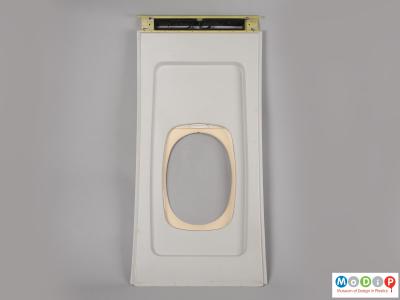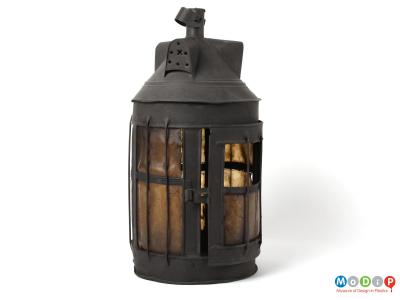Windows for allowing light into a building have been made of a variety of materials. Paper was used in Ancient China, Japan and Korea. The American pioneers used greased paper in the early 1800s, and glass was first used in the 17th century for small windows in grand houses. Every material brings with it its own costs and benefits, and should be selected carefully for the situation in which it is to be used.
Aeroplane windows are made of three layers, the outer of which takes the load. Should this pane fail the middle pane is able to withstand the pressure. This particular window (1) is from a Hawker Siddeley Trident. This model of plane first flew in the 1960s. The first aircraft canopies made of polymethyl methacrylate (PMMA or acrylic) were produced in the 1930s, they were lightweight, strong and had good optical qualities unlike their cellulose nitrate predecessors, which would become yellow very quickly and were highly flammable.
The 19th century lantern (2) has horn panes. Horn is classed as a natural plastic due to the way it can be manipulated using heat and pressure in the same way as synthetic plastics. At the time this lantern was made, translucent and transparent horn was extremely cheap, compared with glass, and relatively durable. Horn was used for lanterns and windows as early as the Roman period (27 BCE – 476). Horn is non-flammable and therefore an ideal material for use with naked flames from candles. It is thought that the word ‘lantern’ is derived from the earlier words ‘lamp horn’ and subsequently ‘lanthorn’, which are expressive of the use of horn panes. Lanterns with horn panes continued to be used by shepherds until the 1930s. The horn panes were made from the central portion of ox horn. It was first heated, then split and scraped with a knife to make it fine and transparent. Finally, the resulting ‘leaves’ were again heated and then flattened under pressure.


